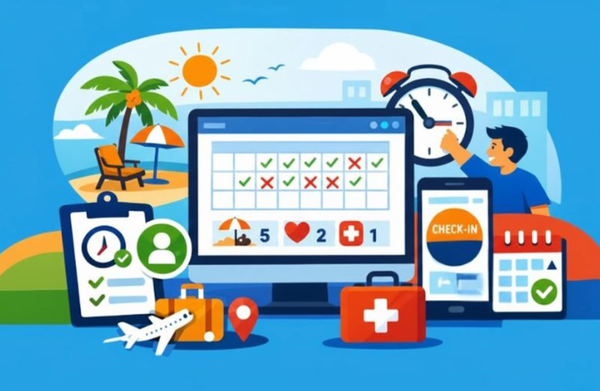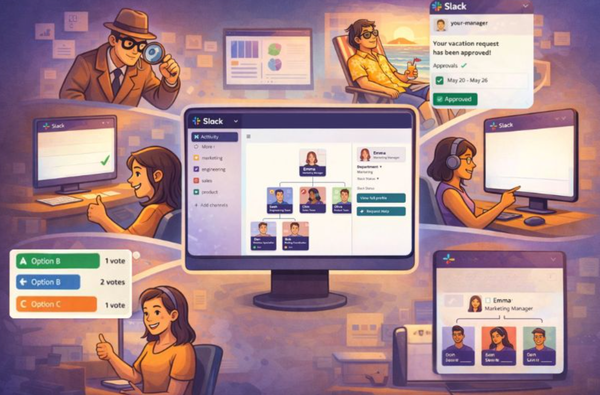Tools to manage remote employees
Build a powerful remote work tech stack with Slack as your foundation. Discover essential tools for HR, project management, and culture to manage your team.

If we tackle the subject of remote workers objectively, we can admit that despite some pushback, hybrid and remote teams are on the rise. A World Economic Forum White Paper has suggested that by 2030, digital advancements will make it possible for a 25% increase in the remote workforce, which accounts for 92 million workers!
With remote work already challenging traditional management practices, it is imperative for leaders to get their arms around managing distributed teams. It calls for a new outlook - one that heavily involves remote workforce management software. Here, we look at a powerful tech stack that will help you manage remote team productivity and engagement. Founders, managers, and HRs - you’ll love what’s coming up.
Quick Overview
Remote work management software refers to digital platforms that provide the tools for managing remote and hybrid workers. They aim to foster communication, collaboration, project management, and productivity. These systems help organizations to overcome the challenges associated with remote working environments.
Table of Contents
- How remote team management software has made a difference
- Slack: The foundation of your remote work stack
- Layer 1: HR & People management
- Layer 2: Project management tools
- Layer 3: Knowledge and document sharing
- Layer 4: Team culture, well-being & recognition
- Layer 5: Analytics & automation
- Conclusion
- Frequently Asked Questions
How remote team management software has made a difference
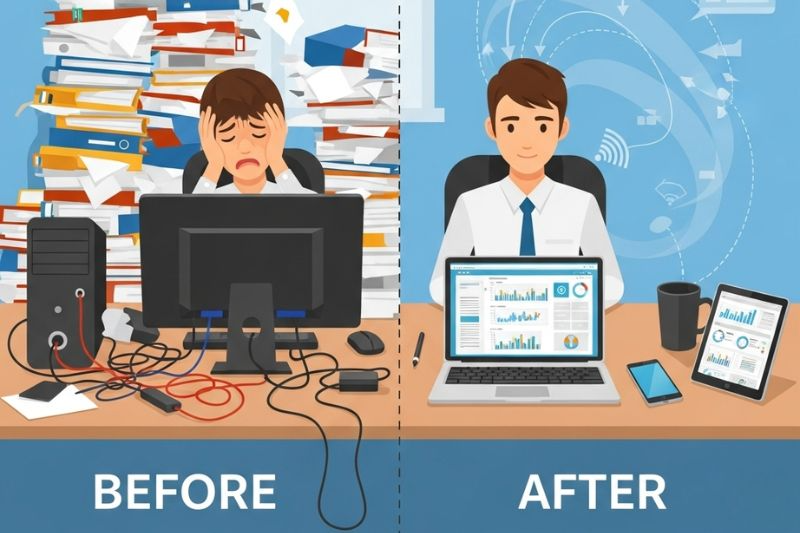
A Harvard Business Review report states that remote working is becoming increasingly successful, with remote team members reporting overwhelmingly positive experiences. This hasn’t always been the case, it seems, so what changed?
Cherwell CEO Sam Gilliland suggests that the major difference in felt experience appears to be a combination of integrated, automated software and the ability to work on low-code/no-code platforms, which makes workflow adaptation quicker and easier. [1]
In this same review, Kim Osoba, Cherwell’s director of talent and organizational effectiveness, shared that their organization saw a fivefold increase in RFPs for its digital transformation offerings. This has given them the ability to connect with a workforce that’s everywhere, and yet still needs the same information.
If remote workforce software is making an impact in an increasingly out-of-office work environment, then what do you need to get the ball rolling? Let’s build a stack together.
Slack: The foundation of your remote work stack
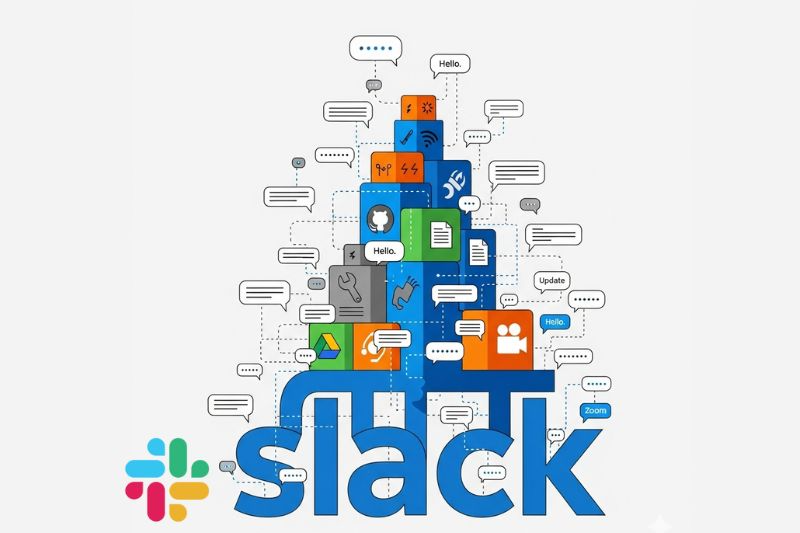
Every building starts with a solid foundation. For remote work, that foundation has to be communication, as leading remote teams will tell you. Without clear, consistent, and centralized communication that focuses on data security, information is at risk, teams scatter, and messages get lost in email threads. What follows is an inevitable decline in productivity and engagement.
Hybrid and distributed teams need open communication channels dedicated to team performance, and the foundation for this is: Slack.
As one of the most widely adopted communication tools, Slack is used by 77 of the Fortune 100 companies.[2] It has earned this position by being more than just a chat app. It is the digital headquarters where teams collaborate, organize workflows, and connect with other tools they rely on daily.
With Slack in place, you have your tech headquarters. Now, it’s time to build upwards.
Layer 1: HR & People management
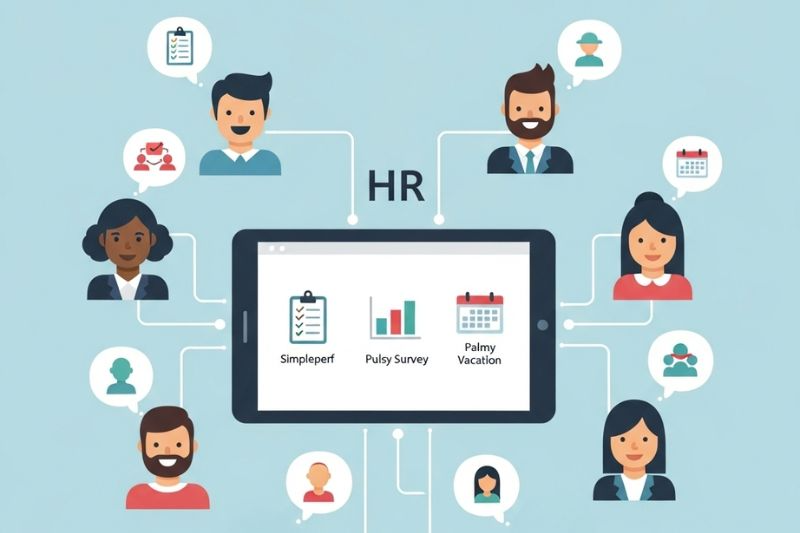
For remote or hybrid companies, this is where the cracks first appear. Performance reviews get delayed, employee engagement slips, and leave requests vanish into spreadsheets. Enter BuddiesHR - a suite of Slack-first apps built specifically for modern People Ops. Instead of asking employees to log into an HR portal, BuddiesHR meets them where they already spend their workday: Slack.
Here’s how BuddiesHR tools plug directly into your Slack HQ.
- Simpleperf: Performance reviews are made simple. No clunky HR system, no forgotten feedback cycles. Managers can set up and run lightweight performance reviews and feedback sessions directly from Slack. Simpleperf automates reminders and provides AI-driven insights that enrich the review process. Don’t let performance management slide when you can make it effortless and efficient.
- Pulsy Survey: Employee engagement is harder to measure when you can’t talk directly to in-office teams - when you can’t read the vibe, you can’t lead the tribe - or so they say. Pulsy Survey solves this by running quick, Slack-native surveys and polls. HR leaders get real-time data on morale, company culture, and company initiatives.
- Palmy Vacation: PTO requests can easily become cumbersome when you manage them on a spreadsheet. Not to mention managing time zone issues. Palmy vacation makes leave tracking frictionless. Employees request time off in Slack, and managers approve in seconds. Everyone sees updated leave calendars, avoiding schedule conflicts. It's a win for everyone with quick approvals and a reduction in admin.
By layering BuddiesHR onto Slack, you get a remote-ready HR system that’s cost-effective, user-friendly, and deeply integrated into daily workflows. Get started with BuddiesHR.
Layer 2: Project management tools
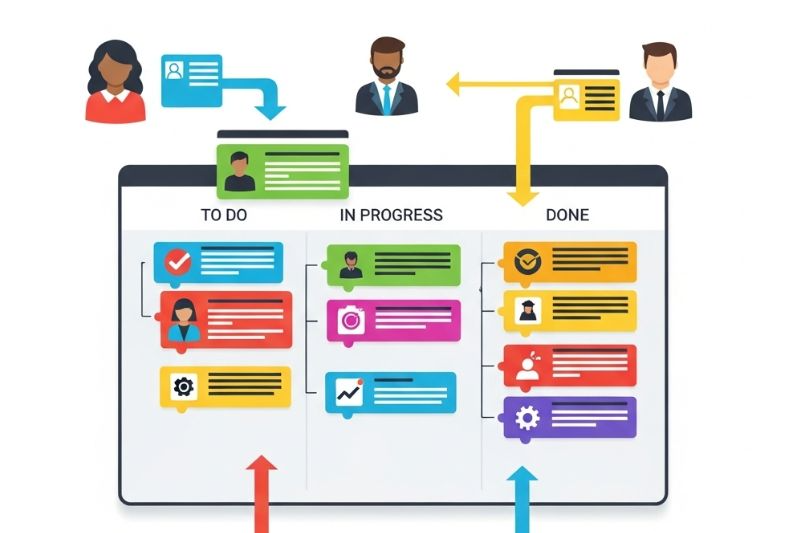
Next, you’ll need to keep everyone on the same page on projects and deliverables. This is achieved with project management software that plugs into Slack. Top options include:
- Asana: For structured project planning, task completion, and progress tracking. The Slack integration sends task reminders and status updates directly to channels.
- Trello: A visual Kanban board ideal for startups that need a lightweight way to track project progress. Trello’s Slack integration lets you create cards and move tasks directly from conversations.
- Clickup: Combines task management with docs, goals, and time tracking. This remote work tool is great for small teams and startups that want an all-in-one solution while still using Slack as their primary communication hub.
Remote teams thrive on the ability to track progress and keep the most critical tasks visible. With Slack integrated task management, everyone knows who’s doing what and by when. No need to jump around with separate tools and consolidate information manually.
Layer 3: Knowledge and document sharing

Distributed teams generate a lot of knowledge, but if it isn’t documented and accessible, it has no real value. Your next step is to create a knowledge base layer.
Recommended integrations for achieving document sharing capability:
- Notion: A flexible and all-in-one workspace for documentation, wikis, task progress, and lightweight project boards. Integrates with Slack for quick page sharing.
- Confluence: A more structured knowledge base for companies that need enterprise-grade documentation.
- Google Workspace: Still a firm favorite for sharing docs, sheets, and access to Google Drive. With Slack integration, you can share, comment, and manage permissions seamlessly.
Imagine a central knowledge base where no one asks: ‘Where’s that file again?” or “Who knows how we do this task?” That’s exactly what one of these Slack integrations can bring to your team.
Layer 4: Team culture, well-being & recognition

Remote operations can feel isolating, and this is why the right tools are needed to create a strong culture. It doesn’t happen by accident - even though we’d like it to - it must be intentionally designed into the stack.
Consider adding these tools to the layers you’ve already created:
- Alfy Matching: Instead of random coffee chats for virtual teams, Alfy Matching intelligently pairs teammates for one-on-one conversations, mentorship sessions, or networking ops - all within Slack. This keeps relationships going and allows people to connect beyond their immediate team. Alfy directly targets one of the biggest remote work challenges: Disconnection.
- Clappy Kudos: Recognition drives employee satisfaction, especially when working remotely, where instant and organic recognition from peers can be lacking. Clappy Kudos enables employees to send quick, fun kudos to their colleagues in Slack. This builds a culture of appreciation that’s visible to the whole team.
Connection and recognition directly influence well-being and employee satisfaction. By intentionally targeting the cultural values you want to see, you can organically build your culture throughout the day through Slack.
Layer 5: Analytics & automation
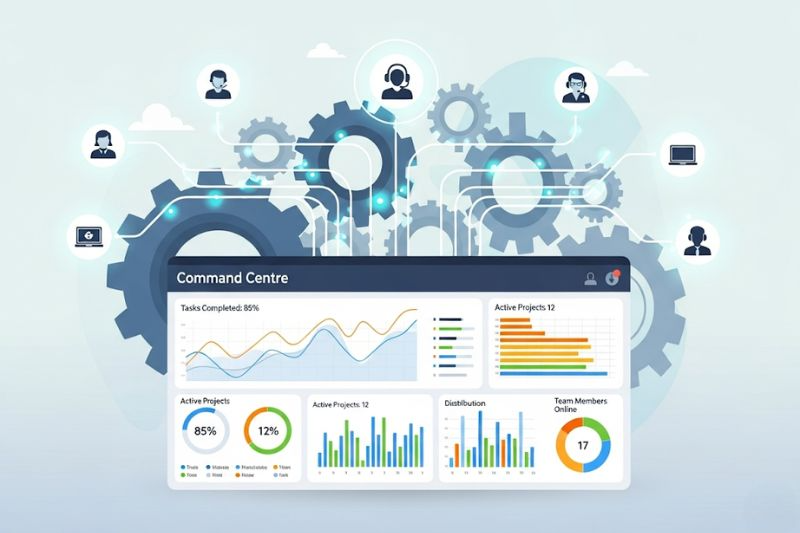
Tech-progressive companies love this step because it eliminates repetitive manual work while unlocking powerful business intelligence.
The specific integrations you choose will depend on your industry and the metrics that matter most to you. For example, sales teams may want dashboards that push pipeline updates into Slack, while HR leaders might track engagement scores or leave balances.
Remote workforce solutions in the Slack marketplace make this possible, turning this final layer in your Slack HQ into a true command center - one where automation handles the manual tasks, and analytics keep everyone aligned to what matters.
Final thoughts
Remote work isn’t a temporary trend, and companies that thrive will be those that intentionally design their digital workspace and get real-time insights.
By using Slack as the foundation of your remote work tech stack, and layering apps like BuddiesHR, Asana, Notion, and Google Workspace onto Slack, you create a complete operating system for remote working. You get a connected, flexible, and scalable solution that fosters productivity and engagement.
🚀 Build a connected, productive, and engaged remote team. Integrate BuddiesHR with your Slack workspace and take the first step toward a smarter way to work.
Frequently Asked Questions
1. Why should remote employees be managed?
Remote employee monitoring is essential for ensuring engagement, productivity, and alignment with organizational goals. Without this intentional management of remote workers, they can drift apart from your company culture, and processes can become chaotic and counterproductive.
2. What are the three Cs of the remote workforce?
The three Cs that make successful remote teams are communication, collaboration, and culture. Concentrating on these three pillars when designing a remote worker tech stack will help you create a powerful all-in-one solution.
3. How can startups build a remote work tech stack on a budget?
Startups can begin with Slack as the core and gradually layer affordable, Slack-native apps, such as BuddiesHR for HR and culture, adding project and knowledge tools only as the team grows.
References:
1. How work management software helped remote working succeed

